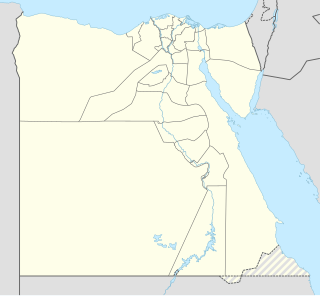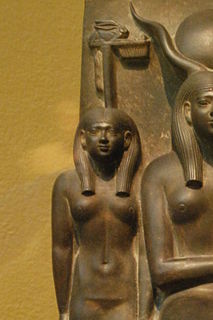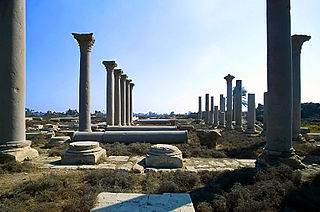This page is based on this
Wikipedia article Text is available under the
CC BY-SA 4.0 license; additional terms may apply.
Images, videos and audio are available under their respective licenses.

Upper Egypt is the strip of land on both sides of the Nile that extends between Nubia and downriver (northwards) to Lower Egypt.

Lower Egypt is the northernmost region of Egypt: the fertile Nile Delta, between Upper Egypt and the Mediterranean Sea — from El Aiyat, south of modern-day Cairo, and Dahshur. Historically, the Nile River split into seven branches of the delta in Lower Egypt. Lower Egypt was divided into nomes and began to advance as a civilization after 3600 BC. Today, it contains two channels major that flow through the delta of the Nile River.
Nomarchs were Ancient Egyptian administration officials responsible for the provinces. Effectively serving as provincial governors, they each held authority over one of the 42 nomes into which the country was divided. Nome is derived from the Greek nomos, meaning a province or district, and nomarch is derived from the Greek title nomarches, the ruler of a nomos.

Bubastis, also known in Arabic as Tell-Basta or in Egyptian as Per-Bast, was an Ancient Egyptian city. Bubastis is often identified with the biblical Pi-Beseth. It was the capital of its own nome, located along the River Nile in the Delta region of Lower Egypt, and notable as a center of worship for the feline goddess Bast, and therefore the principal depository in Egypt of mummies of cats.
A nome was a territorial division in ancient Egypt.

The Thebaid or Thebais was a region of ancient Egypt, which comprised the thirteen southernmost nomes of Upper Egypt, from Abydos to Aswan.

Hu is the modern name of an Egyptian town on the Nile, which in more ancient times was the capital of the 7th Nome of Upper Egypt. The nome was referred to as Sesheshet (Sistrum). The main city was referred to as Hu(t)-sekhem, which was abbreviated as Hu. This led to the Arabic name Hiw. In Ptolemaic times the city was called Diospolis Parva in comparison with Thebes, Egypt, known as Diospolis Magna. It was also called Diospolis Superior, in comparison with Diospolis Inferior in the Nile Delta.
Hermopolis Parva was the Greek name for two cities in ancient Egypt:

Thmuis is a city in Lower Egypt, located on the canal east of the Nile, between its Tanitic and Mendesian branches.

Arcadia or Arcadia Aegypti was a Late Roman province in northern Egypt.
Leontopolis may refer to:

Minya is the capital of the Minya Governorate in Upper Egypt. It is located approximately 245 km (152 mi) south of Cairo on the western bank of the Nile River, which flows north through the city. The name of the city is derived from its Ancient Egyptian name Men'at Khufu, meaning the nursing city of Khufu, linking it to the Pharaoh Khufu or Cheops, builder of the Great Pyramid at Giza.
Middle Egypt is the section of land between Lower Egypt and Upper Egypt, stretching upstream from Asyut in the south to Memphis in the north. At the time, Ancient Egypt was divided into Lower and Upper Egypt, though Middle Egypt was technically a subdivision of Upper Egypt. It was not until the 19th century that archaeologists felt the need to divide Upper Egypt in two. As a result, they coined the term "Middle Egypt" for the stretch of river between Cairo and the Qena Bend. It was also associated with a region termed Heptanomis, generally as the district which separates the Thebaïd from the Delta.
Tatenen was the god of the primordial mound in ancient Egyptian religion. His name means "risen land" or "exalted earth", as well as referring to the silt of the Nile. As a primeval chthonic deity, Tatenen was identified with creation. He was an androgynous protector of nature from the Memphis area, the ancient capital of the Aneb-Hetch nome in Lower Egypt.

Meryhathor or Meryt-Hathor, was a pharaoh of the 10th Dynasty of Egypt, during the First Intermediate Period.

The Hare nome, also called the Hermopolite nome was one of the 42 nomoi in ancient Egypt; more precisely, it was the 15th nome of Upper Egypt.







